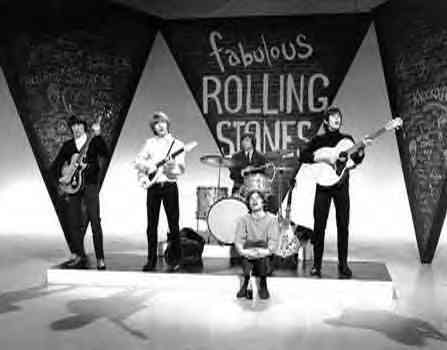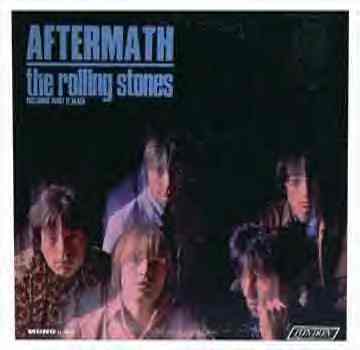
The Rolling Stones


|
by Charles Shaar Murray A British rock group formed in 1962, the Rolling Stones drew on Chicago blues stylings to create a unique vision of the dark side of post-1960s counterculture. No rock band has sustained consistent activity and global popularity for so long a period as the Rolling Stones, still capable, more than 35 years after their formation, of filling the largest stadiums in the world. Though several of their mid-1960s contemporaries--notably Bob Dylan, Paul McCartney, Eric Clapton, and Van Morrison--have maintained individual positions in rock's front line, the Rolling Stones's nucleus of singer Mick Jagger, guitarist Keith Richards, and drummer Charlie Watts remains rock's most durable ongoing partnership. In the process, the Stones have become rock's definitive, emblematic band: a seamless blend of sound, look, and public image. It may be debatable whether they have actually, at any given moment, been the "greatest rock-and-roll band in the world," as their time-honored onstage introduction has claimed them to be; that they are the mold from which various generations of challengers--from the Who, Led Zeppelin, and Aerosmith via the New York Dolls, the Clash, and the Sex Pistols all the way to Guns N' Roses and Oasis--have been struck is not. In their onstage personae, Jagger and Richards established the classic rock band archetypes: the preening, narcissistic singer and the haggard, obsessive guitarist. Formed in London as an alliance between Jagger, Richards, and multi-instrumentalist Brian Jones along with Watts and bassist Bill Wyman, the Stones began as a grubby conclave of students and bohemians playing a then-esoteric music based on Chicago ghetto blues in pubs and clubs in and around West London. Their potential for mass-market success seemed negligible at first, but by 1965 they were second only to the Beatles in the collective affection of teenage Britain. However, whereas the Beatles of the mid-1960s had longish hair, wore matching suits, and appeared utterly charming, the Stones had considerably longer hair, all dressed differently, and seemed thoroughly intimidating. As the Beatles grew ever more respectable and reassuring, the Stones became correspondingly more rebellious and threatening. The Stones--specifically Jagger, Richards, and Jones--were subjected to intense police and press harassment for drug use and all-purpose degeneracy, while the Beatles, who were, in private life, no less fond of marijuana, sex, and alcohol, were welcomed at Buckingham Palace and made members of the Order of the British Empire (M.B.E.) by the queen. The Stones's early repertoire consisted primarily of recycled gems from the catalogs of the blues and rock-and-roll titans of the 1950s: their first five singles and the bulk of their first two albums were composed by others. The turning point was reached when, spurred on by the example of the Beatles' John Lennon and Paul McCartney, Jagger and Richards began composing their own songs, which not only assured the long-term viability of the band but also served to place the Jagger-Richards team firmly in creative control of the group. Jones had been their prime motivating force in their early days, and he was the band's most gifted instrumentalist as well as its prettiest face, but he had little talent for composition and became increasingly marginalized. His textural wizardry dominated their first all-original album, Aftermath (1966), which featured him on marimba, dulcimer, sitar, and assorted keyboards as well as on his customary guitar and harmonica. Thereafter, however, he declined in both creativity and influence, becoming a depressive, drug-sodden liability eventually fired by the band mere weeks before his death. The Jagger-Richards songwriting team created its first bona fide classic, "Satisfaction," in 1965 and enjoyed a string of innovative hit singles well into 1966 including "Paint It Black," "19th Nervous Breakdown," "Get Off My Cloud," "Have You Seen Your Mother, Baby," and "Lady Jane." But the era of art-pop and psychedelia, which coincided with the Beatles' creative peak, represented a corresponding trough for the Stones. The fashions of the era of whimsy and flower power did not suit their essentially dark and disruptive energies, and their psychedelic album Their Satanic Majesties Request (1967), with its accompanying single "We Love You," was a comparatively feeble riposte to the Beatles' all-conquering Sgt. Pepper's Lonely Hearts Club Band and contributed little beyond its title to their legend. Furthermore, they were hampered by seemingly spending as much time in court and jail as they did in the studio or on tour. However, as the mood of the time darkened, the Stones hit a new stride in 1968 with the epochal single "Jumpin' Jack Flash," which reconnected them to their blues-rock roots, and the album Beggars Banquet. Replacing Jones with the virtuosic but self-effacing guitarist Mick Taylor, they returned to the road in 1969, almost instantly becoming rock's premier touring attraction. By the end of 1970 the Beatles had broken up, Jimi Hendrix was dead, and Led Zeppelin had barely appeared on the horizon. Though Led Zeppelin eventually outsold the Stones by five albums to one, no group could challenge their central position in the rock pantheon. Moreover, the death of Brian Jones, combined with Taylor's lack of onstage presence, elevated public perception of Richards' status from that of Jagger's right-hand man to effective coleader of the band. The period between "Jumpin' Jack Flash" and the double album Exile on Main Street (1972) remains their creative and iconic peak. Including the studio albums Let It Bleed (1969) and Sticky Fingers (1971) plus the in-concert Get Yer Ya-Yas Out (1970), it gave them the repertoire and image which still defines them and on which they have continued to trade ever since: an incendiary blend of sex, drugs, satanism, and radical politics delivered with their patented fusion of Jagger's ironic distance and Richards' tatterdemalion intensity. Their records and concerts at this time both explored and provided the soundtrack for the contradictions of a collapsing counterculture at a time when almost everybody else--the Doors, the Velvet Underground, and Frank Zappa's Mothers of Invention excepted--still seemed to be in a state of psychedelic euphoria. Produced first by Glyn Johns and Jimmy Miller and then by Jagger and Richards themselves (as the "Glimmer Twins"), their recordings of this period found them adding country music to their list of influences and--most notably on Beggars Banquet--adding more and more acoustic guitar textures to their already impressive command of musical light and shade. Yet their blues-powered foray into the era's heart of darkness bore bitter fruit indeed: when a young black man was murdered by Hell's Angels (hired as security) at a disastrous free concert at Altamont Speedway in California during their 1969 American tour, it seemed to many observers that the Stones's own aura of decadence and danger was somehow to blame for the tragedy. The quality of their music began to decline after Exile on Main Street. Jagger and Richards began to act out the group's fascination with the juxtaposition of high society and low life: the singer became a jet-set figure, and the guitarist a full-time junkie who finally "cleaned up" in 1977, thereby saving both his own life and the band's future. Taylor left in 1975 to be replaced by Ron Wood, formerly of the Faces, and, despite the occasional bright spot like Some Girls (1978), Emotional Rescue (1980), or "Start Me Up" (1981), the Stones's albums became increasingly predictable, though their tours continued to sell out. They even briefly disbanded in the late 1980s after a public spat between Jagger and Richards. Both leaders recorded solo albums that performed relatively poorly in the marketplace, though Richards' work was significantly more favorably reviewed than Jagger's. Disputes settled, the Stones reconvened in 1989 for their Steel Wheels album and tour. Wyman retired in 1992 and was replaced on tour by Daryl Jones, formerly a bassist for Miles Davis and Sting, and in the studio by a variety of guest musicians. Jagger, Richards, Watts, and Wood continue to trade as the Rolling Stones, and, whenever they tour, audiences flock in the thousands to discover if the old lions can still roar. The general consensus is that they can. In their late middle age, the ultimate rebels have become the ultimate institution, and to many they remain the ultimate rock band. Original Members Mick Jagger, vocals Keith Richards,
guitar Brian Jones, guitar,
harmonica, marimba, keyboards, and vocals Bill Wyman, bass Charlie Watts, drums Later Members Mick Taylor, guitar Ron Wood, guitar Darryl Jones, bass |


![]()